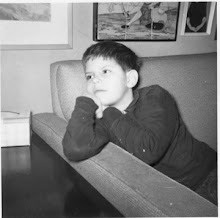


Francis Thompson made this jewel of a film in 1957. He was a painter and art teacher before discovering filmmaking. Inspired by cubism and futurism, this film is a uniquely cinematic celebration of the spectacle of New York City. It is a city symphony unlike any other as it is simultaneously abstract and figurative. Every shot is altered by anamorphic mirrors or prisms that he assembled and manipulated himself. He turns the city into an optical ballet. He worked alone, almost in secret. He described his production process for a screening of the film on Reel New York. “...it was a magic, secret process of bending, twisting, and turning inside out. It was a self funded project that involved my roaming about New York City with a camera over my shoulder”.
He went on to make many more films including the Oscar winning “To Be Alive”, a three screen celebration of life made for the 1964 World’s Fair. He died in 2003 at the age of 95, after returning to painting in his later years in his East 51st Street apartment.
more about "Francis Thompson, NY, NY: A Day in Ne...", posted with vodpod










